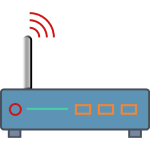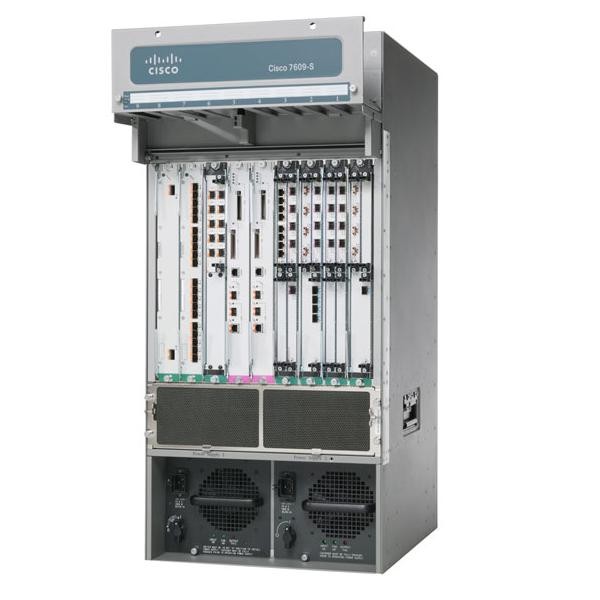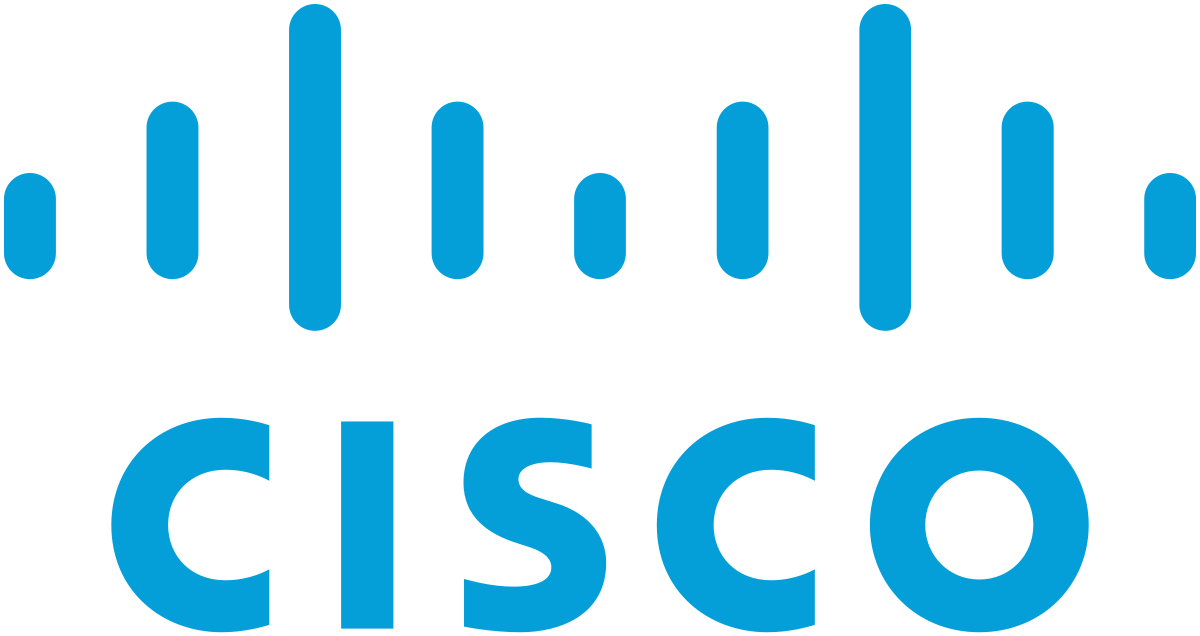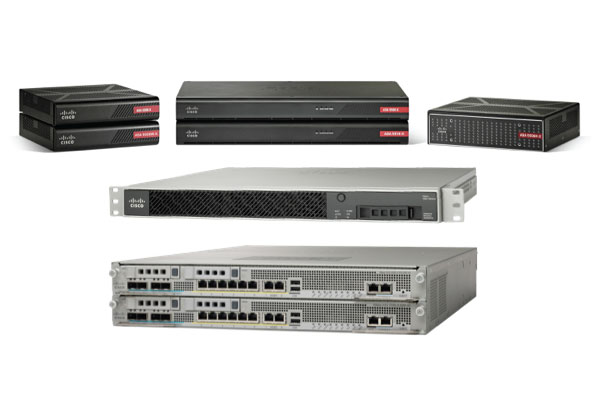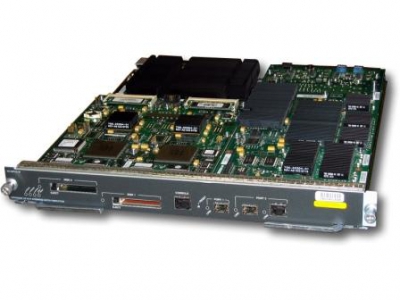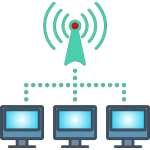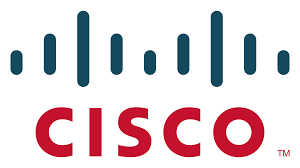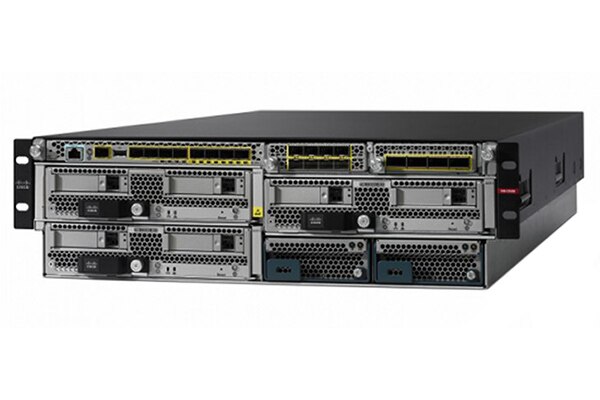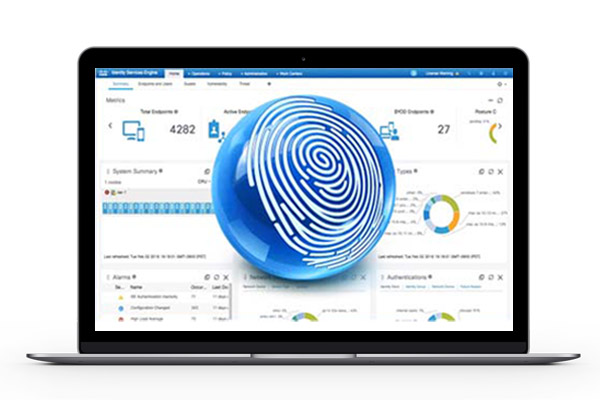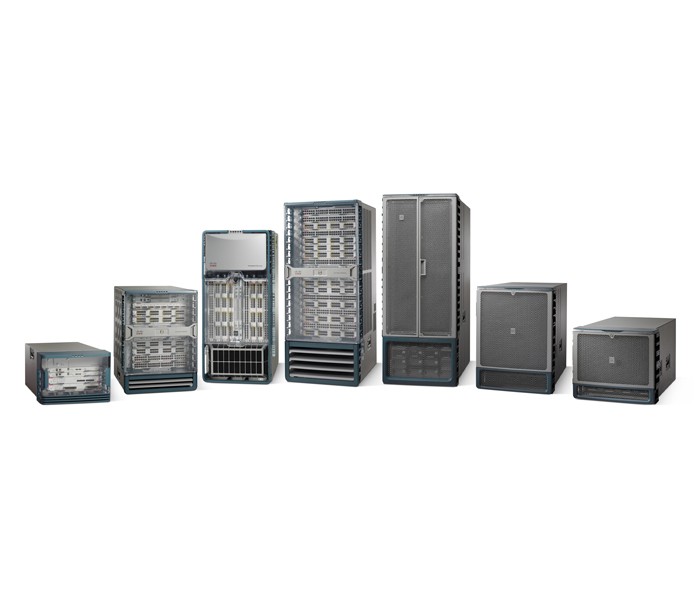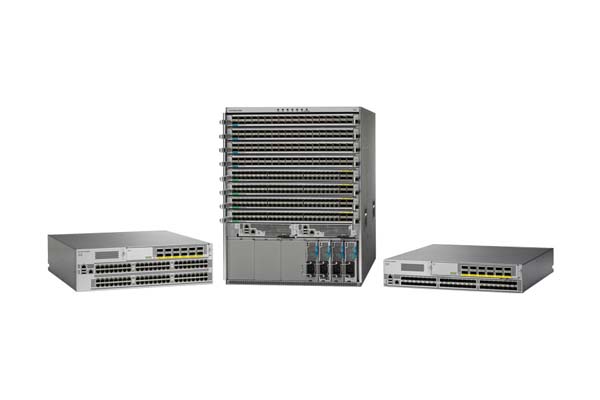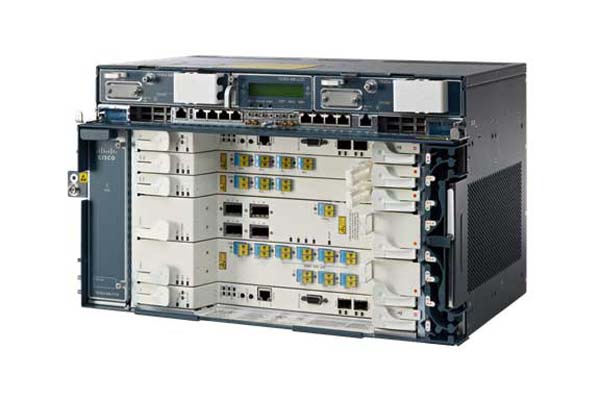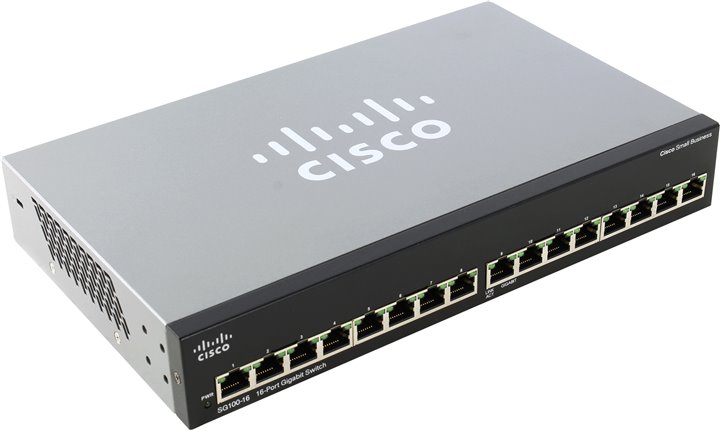View
Sorting
Products found: 32
Cisco 4000 Series Integrated Services Routers
The Cisco 4000 Family Integrated Services Router (ISR) revolutionizes WAN communications in the enterprise branch. With new levels of built-in intelligent network capabilities and convergence, it specifically addresses the growing need for application-aware networking in distributed enterprise sites. These locations tend to have lean IT resources. But they often also have a growing need for direct communication with both private data centers and public clouds across diverse links, including Multiprotocol Label Switching (MPLS) VPNs and the Internet.
The Cisco 4000 Family contains the following platforms: the 4461, 4451, 4431, 4351, 4331, 4321 and 4221 ISRs.
Features and Benefits
Cisco 4000 Family ISRs provide you with Cisco® Software Defined WAN (SDWAN) software features and a converged branch infrastructure. Along with superior throughput, these capabilities form the building blocks of next-generation branch-office WAN solutions.
Cisco Software Defined WAN
Cisco SDWAN is a set of intelligent software services that allow you to reliably and securely connect users, devices, and branch office locations across a diverse set of WAN transport links. SDWAN-enabled routers like the ISR 4000 dynamically route traffic across the “best” link based on up-to-the-minute application and network conditions for great application experiences. You get tight control over application performance, bandwidth usage, data privacy, and availability of your WAN links - control that you need as your branches conduct greater volumes of mission-critical business.
Cisco Converged Branch Infrastructure
The Cisco 4000 Series ISRs consolidate many must-have IT functions, including network, compute, and storage resources. The high-performance, integrated routers run multiple concurrent services, including encryption, traffic management, and WAN optimization, without slowing your data throughput. And you can activate new services on demand through a simple licensing change.
Cisco Intent Based Networking and Digital Network Architecture (Cisco DNA)
The last few years has seen a rapid transformation and adoption of digital technologies. This puts pressure on the on the Network teams supporting this changing infrastructure - especially when provisioning, managing, monitoring and troubleshooting these diverse devices. Additionally innovations such as Software Defined WAN (SDWAN), Network Function Virtualization (NFV), Open APIs and Cloud Management show great promise in transforming Organizations IT networks. This transformation raises further questions and challenges for the IT teams.
The Cisco Digital Network Architecture (Cisco DNA) is an open, extensible, software-driven architecture that provides for faster innovation, helping to generate deeper insights, and deliver exceptional experiences across many different applications. Cisco DNA relies on intent-based networking, a revolutionary approach in networking that helps organizations automate, simplify, and secure the network.
The intent-based Cisco DNA network is:
- Informed by Context: Interprets every byte of data that flows across it, resulting in better security, more customized experiences, and faster operations.
- Powered by Intent: Translates your intent into the right network configuration, making it possible to manage and provision multiple devices and things in minutes.
- Driven by Intuition: Continually learns from the massive amounts of data flowing through it and turns that data into actionable insight. Helps you solve issues before they become problems and learn from every incident.
Cisco DNA Center provides a centralized management dashboard across your entire network — the branch, campus, data center, and cloud. Rather than relying on box-by-box management, you can design, provision, and set policy end-to-end from the single Cisco DNA Center interface. This allows you to respond to organizational needs faster and to simplify day-to-day operations. Cisco DNA Analytics and Assurance and Cisco Network Data Platform (NDP) help you get the most from your network by continuously collecting and putting insights into action. Cisco DNA is open, extensible, and programmable at every layer. It integrates Cisco and third-party technology, open APIs, and a developer platform, to support a rich ecosystem of network-enabled applications.
Cisco 7600 Series Routers
Cisco Advanced Malware Protection (Cisco AMP for Endpoints)
- Filtering out policy-violating files from the Internet, e-mails, and more.
- Detecting and protecting against client-side exploit attempts and exploit attempts aimed at client applications like Java and Flash.
- Recognizing, blocking, and analyzing malicious files.
- Identifying malware patterns and anticipating potentially breached devices.
- Tracking malware’s spread and communications.
- Alleviating threats of reinfection.
Cisco Application Centric Infrastructure (ACI)
- Automate IT workflows and help organizations shorten app deployment from weeks to minutes.
- Open and programmable. Build programmable SDN fabrics leveraging open APIs and over 65 Cisco ACI global partner ecosystems.
- Security and analytics. Secure applications through whitelist model, policy enforcement, and micro-segmentation.
- Workload mobility at scale. Deploy and migrate applications seamlessly across geographies with consistent policy.
Cisco Application Policy Infrastructure Controller (APIC)
Cisco ASA NGFW (Adaptive Security Appliance Software)
- Offers integrated IPS, VPN, and Unified Communications capabilities
- Helps organizations increase capacity and improve performance through high-performance, multi-site, multi-node clustering
- Delivers high availability for high resiliency applications
- Provides collaboration between physical and virtual devices
- Meets the unique needs of both the network and the data center
- Provides context awareness with Cisco TrustSec security group tags and identity-based firewall technology
- Facilitates dynamic routing and site-to-site VPN on a per-context basis
Cisco Catalyst 6500 Series 7600 Series Wireless Services Module (WiSM)
Cisco Cloudlock
Cisco Connected Mobile Experiences (CMX)
Benefits With the CMX solution, you can:
- Analyze business performance and optimize marketing activities through quantitative analysis of activity at your facility, for example, determining the patency of a particular store
- Increase the profitability per square meter by optimizing the location using the detailed traffic of the outlet, the conversion rate of visitors into customers, as well as other information, up to specific zones, as well as quantifying the implementation of changes
- Increase customer satisfaction by ensuring that there are enough staff during peak periods
- Increase profitability using location data for optimal mobile marketing campaigns.
Cisco Email Security
Cisco Firepower 9300 Series
Features:
Scalable multiservice security Eliminate security gaps. Integrate and provision multiple Cisco and Cisco partner security services dynamically across the network fabric. See and correlate policy, traffic, and events across multiple services. Expandable security modules Flexibly scale your security performance. Meet business agility needs and enable rapid provisioning. Carrier-grade performance NEBS-compliant configurations available. Elevate threat defense and network performance with low-latency, large flow handling, and orchestration of security services. Protect Evolved Programmable Network, Evolved Services Platform, and Application Centric Infrastructure architectures. Benefits:- Designed for service provider and data center deployments
- Threat inspection up to 90 Gbps
- Includes AVC, with AMP and URL options
- Fail-to-wire interfaces available
Cisco Identity Services Engine
CISCO ISE (Identity Services Engine)
The Cisco Identity Services Engine (ISE) offers a network-based approach for adaptable, trusted access everywhere, based on context. It gives you intelligent, integrated protection through intent-based policy and compliance solutions. And it is all delivered with streamlined, centralized management that lets you scale securely in today's market.
Username is a key element in determining access to a network. Username can also help you alert you users to potentially suspicious activity with their devices. It answers the all-important question of who is connected to your network.
The Cisco Identity Services Engine (ISE) Passive Identity Connector centralizes, consolidates, and distributes identity information, including IP addresses, MAC addresses, and usernames. At the same time it offloads work from key infrastructure such as Microsoft Active Directory.
Many servers on the network are active participants in user authentication. They take user credentials and either verify them or look them up in a dedicated repository such as Active Directory. Rather than being actively involved in user authentication, the Passive Identity Connector listens to the various authentication servers on the network. It centralizes the authentication information, becoming the single source of truth for its subscribers.
The Passive Identity Connector distributes the session identity information to other devices on the network that are natural consumers of such information. These devices include firewalls, web security appliances, and traffic analyzers. Using the Cisco Platform Exchange Grid (pxGrid), the Cisco ISE Passive Identity Connector can support up to 20 subscribers.
Features:
- Centralized information
- Improved performance
- Syslog server support
- Active Directory support
- Kerberos SPAN support
- Endpoint probes
- Active Directory agent
- Support for custom APIs
- Citrix Terminal Server support
- High availability
- Migration support
- Virtual machine support
- Scalability
Benefits:
- Consolidates data from multiple authentication sources, eliminating the need for every system that requires authentication data to interact with every authentication source
- Eliminates the burden on an often-overtaxed infrastructure with a single system that caches data for other authentication data consumers
- Gathers authentication data from systems that support syslog
- Gathers authentication data from Active Directory through the Microsoft Windows Management Interface (WMI)
- Gathers Active Directory authentication data from switches supporting Kerberos SPAN
- Understands when endpoints log off
- Gathers authentication data from up to 10 Microsoft Active Directory domain controllers
- Gathers authentication data from systems that support a custom interface
- Gathers authentication data from Citrix Terminal Server
- Supports active/passive redundancy
- Customers may upgrade from the Cisco ISE Passive Identity Connector to Cisco ISE, adding the Passive Identity Connector node to an existing Cisco ISE cluster.
- Supports KVM, VMware, and Hyper-V
- Tailored to fit your organization with support for 3,000 and 300,000 sessions
Cisco MediaSense 8.5
Contact centers handle thousands of customer conversations a day, but unfortunately much of the enterprise intelligence that could be gleaned from those conversations is never used - because it is either too expensive to capture or too difficult to mine for useful information. Cisco solves these challenges by recording conversations on the network - rather than a device - simplifying the architecture, lowering costs, and providing optimum scalability.
Just as important, Cisco’s network-based recording approach allows the captured media to be quickly available to different applications - regardless of location - through simple application programming interfaces (APIs). These interfaces implement open web standards, enabling a new ecosystem of applications that can gather useful information from conversations, either in real time or afterward. Such information can provide insights into caller concerns, guiding customer service agents toward speedy first-call resolution, thereby improving agent productivity while increasing customer satisfaction. With Cisco, gaining valuable business intelligence from customer conversations is no longer a daunting challenge.
Cisco Nexus 7000 Series Switches
Cisco Nexus 9000 Series Switches
Cisco ONS 15454 Series
Cisco ROADM innovation continues into its fourth generation with the first Single Module ROADM. It combines multidegree wavelength switching functionality with optical amplification and spectrum analysis in a single slot line card.
Utilize new features
Along with advanced features, the 15454 provides wavelength switched optical network functionality. This embeds optical layer intelligence directly into network elements to support wavelength-on-demand services and dynamic restoration.
Gain flexible aggregation
Cisco optical transport aggregation solutions integrate packet, SONET, and OTN aggregation and switching into the DWDM transport platform. Customers will enjoy efficient wavelength fill and tight communication among network layers.
Streamline operations
Selected on a per card basis, a mix of Layer 1 services, time division multiplexing (TDM), and packet switching technologies can be deployed where needed. Meet customer and network requirements while simplifying operations.
Scale to 100 Gb and beyond
Cisco leads the optical transport industry as it moves toward coherent technology for DWDM transport of 100 Gb services. Powered by nLight Silicon, Cisco coherent technology will scale to even greater densities and higher bit rates.
Cisco Packaged Contact Center Enterprise
- Cisco Unified Contact Center Enterprise (to enable omnichannel customer journeys)
- Cisco Unified Customer Voice Portal (for speech-enabled self-service)
- Cisco Unified Intelligence Center (for comprehensive reporting)
- Cisco Finesse web-based agent/supervisor desktop
- Support for inbound and outbound voice
- Built-in email and chat
- Social media customer care
- Support for inbound video
- Audio and video recording
- Powerful application programming interfaces for integrating task and outbound routing
- Blade server support
- Web-based administration
- Simplified log collection and trace level management
- Built-in real-time system health check
- Live data real-time reporting
- Enhanced customer experiences through all contact channels
- Optimized engagement with mobile and video callers
- Cost reduction by using your existing communications infrastructure
- Increased employee productivity and lower support costs
- Flexible addition of new capabilities through standard web APIs
Cisco Prime Infrastructure
Cisco Prime Infrastructure has what you need to simplify and automate management tasks while taking advantage of the intelligence of your Cisco networks. Product features and capabilities help you: Realize One Management
This single, unified solution provides wired and wireless lifecycle management, and application visibility and control. It also offers policy monitoring and troubleshooting with the Cisco Identity Services Engine (ISE) and location-based tracking of mobility devices with the Cisco Mobility Services Engine (MSE). You can manage the network, devices, applications, and users – all from one place.
Consolidate Products
Consolidate management products and reduce the number of tools required to manage the network. Managing your network using Cisco Prime Infrastructure gives you greater visibility and control, with faster deployment and troubleshooting. You can spend more time transforming your business through innovation and differentiation Manage the Network for Mobile Collaboration
Cisco Prime Infrastructure offers support for 802.11ac, correlated wired-wireless client visibility, spatial maps, Radio Frequency prediction tools, and much more. Simplify the management of the wireless infrastructure while solving problems faster and with fewer resources.
Simplify Intelligent WAN Management
Take management simplicity to the next level. Cisco Prime Infrastructure offers new, guided workflows for the Intelligent WAN and Converged Access, based on Cisco best practices. These workflows make new branch rollouts easy and fast, from setting up devices and services to automatically managing and monitoring them.
Extend Management to the Data Center
Cisco Prime Infrastructure offers fault, configuration, accounting, performance, and security (FCAPS) management with 360-degree views of Cisco Unified Computing System Series B Blade Servers and Series C Rack Servers and Cisco Nexus switches, including the Application-Centric Infrastructure–ready Cisco Nexus 9000 Series Switches. Your data center is critical to service assurance. Manage it effectively with Cisco Prime Infrastructure.
Speed Time to Value with Device and Technology Packs
Device Packs offer ongoing support of new Cisco devices and software releases. It provides parity within each device family, eliminating gaps in management operations, especially when it comes to service availability and troubleshooting. Technology Packs deliver new features between releases, accelerating time to value for high-demand functionality.
Scale Bigger
Large or global organizations often distribute network management by domain, region, or country. Cisco Prime Infrastructure Operations Center lets you visualize up to 10 Cisco Prime Infrastructure instances, scaling your management infrastructure while maintaining central visibility and control.
The ROI4CIO Product Catalog is a database of business software, hardware, and IT services. Using filters, select IT products by category, supplier or vendor, business tasks and problems. Find the right business solutions by using a neural network search based on the results of deployment products in other companies.

